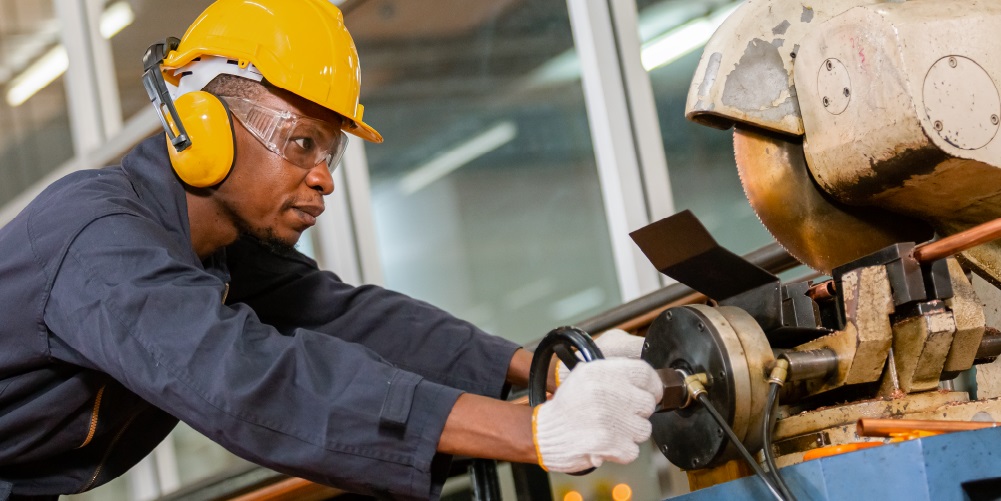If you’ve ever stood next to an active construction site in Singapore, you know how noisy things can get. The constant drilling, heavy machinery, and delivery trucks all add up to a familiar soundtrack of progress. For construction teams, this is just part of the job. But for nearby residents, office workers, and schools, that same noise can easily become a daily frustration.
And when complaints start rolling in, things can get complicated fast. Noise-related complaints can delay projects, attract NEA inspections, or even lead to fines if regulations are breached. That’s why noise management is no longer just a “nice to have” — it’s a necessity.
The good news is, keeping things less noisy doesn’t have to slow your project down. With planning and the right materials like sound barriers in Singapore, construction teams can stay productive while keeping the peace.
Why Noise Control Matters More Than Ever
Singapore’s construction scene is unique. Projects are often built right next to homes, offices, hospitals, or schools. There’s rarely any buffer between the worksite and the public. That means even moderate construction noise can affect people’s comfort and trigger complaints.
But it’s not just about keeping residents happy. Excessive noise affects your own workforce too. Prolonged exposure to high decibel levels can cause fatigue, stress, and even long-term hearing issues. It also makes communication harder on-site, which increases the risk of accidents.
Step One: Plan Ahead with Noise in Mind
A lot of noise issues can be avoided by addressing them early. When you’re planning your project timeline, take a close look at when and where the loudest tasks will happen. Activities like piling, demolition, and concrete breaking are notorious for their noise levels, so try to schedule them during mid-morning or early afternoon when they’ll have the least community impact.
It’s also a good idea to study the site surroundings. Are there nearby HDB blocks? Is there a school within a few hundred metres? Understanding your site’s environment helps you decide where to install sound barriers or how to angle them to maximise noise reduction.
Being proactive about noise management during planning saves a lot of headaches later. It also shows NEA inspectors and residents that you’re taking responsible measures right from the start.
Step Two: Invest in Quality Sound Barriers
One of the most effective and practical ways to manage noise is by using a sound barrier that construction teams rely on. These barriers are designed to block and absorb sound, preventing noise from spreading beyond the site.
Modern sound barriers are a far cry from the bulky ones used years ago. Today’s versions are lightweight, modular, and easy to move or adjust as the project progresses. They’re also weather-resistant, making them ideal for Singapore’s humid climate.
Installing these barriers around the perimeter of your site, or even between particularly loud work zones, can dramatically cut down the noise that reaches surrounding areas. The result? A safer and more productive site and far fewer complaints from your neighbours.
Step Three: Maintain Your Equipment
Here’s a simple truth: old or poorly maintained equipment makes more noise. Loose bolts, worn-out bearings, and rusty components can turn an ordinary excavator into a roaring nuisance.
Regular maintenance isn’t just about keeping machinery running smoothly — it’s also a noise control strategy. Well-oiled, properly tuned equipment operates more quietly and efficiently. It’s a small step that makes a noticeable difference, especially on large sites with multiple machines running at once.
Encouraging operators to report unusual sounds and vibrations can also help you catch potential issues early. It’s all part of maintaining a culture of care and awareness.
Step Four: Keep the Community in the Loop
Sometimes, it’s not the noise itself that bothers people — it’s the surprise of it. A simple notice or message explaining upcoming work can make a world of difference.
Before starting major or particularly noisy phases, send out a short letter to nearby residents or businesses. Let them know what to expect, when it will happen, and how long it will last. You can also provide a contact number or email in case they have concerns.
This kind of communication builds trust and shows that you’re considerate. Many construction companies in Singapore have found that being transparent upfront drastically reduces the number of noise complaints they receive.
Step Five: Train Your Team on Noise Awareness
Noise management is also about people. Your crew plays a big role in keeping things under control.
Encourage small but meaningful habits, like switching off idling engines, using less noisy tools when available, and communicating through radios instead of shouting across the site. These small actions add up over time and contribute to a calmer, safer work environment.
Some companies even conduct short toolbox talks focused on noise control. It’s a great way to remind everyone that managing sound isn’t just about avoiding fines, but also about protecting each other and maintaining a good image in the community.
Step Six: Monitor and Adjust
Even with a solid plan in place, noise levels can change depending on the project stage, weather, or new machinery. That’s why ongoing monitoring is key.
Portable sound meters can give you real-time readings, helping you identify when noise levels approach NEA’s limits. If they do, you can quickly respond by adjusting your work schedule, installing extra barriers, or relocating noisy equipment to a less sensitive area.
This proactive approach helps you stay compliant and prevents minor issues from escalating into major problems.
Final Thoughts: The Real Payoff of Smart Noise Management
Managing noise isn’t just about ticking off regulatory boxes. It’s about creating a positive work environment, maintaining good community relationships, and protecting your company’s long-term reputation.
Using effective tools like a sound barrier developers trust, maintaining your equipment, and communicating openly with nearby residents, you create smoother workflows and fewer disruptions. You’ll also avoid costly fines and gain the trust of both your workers and the community.




